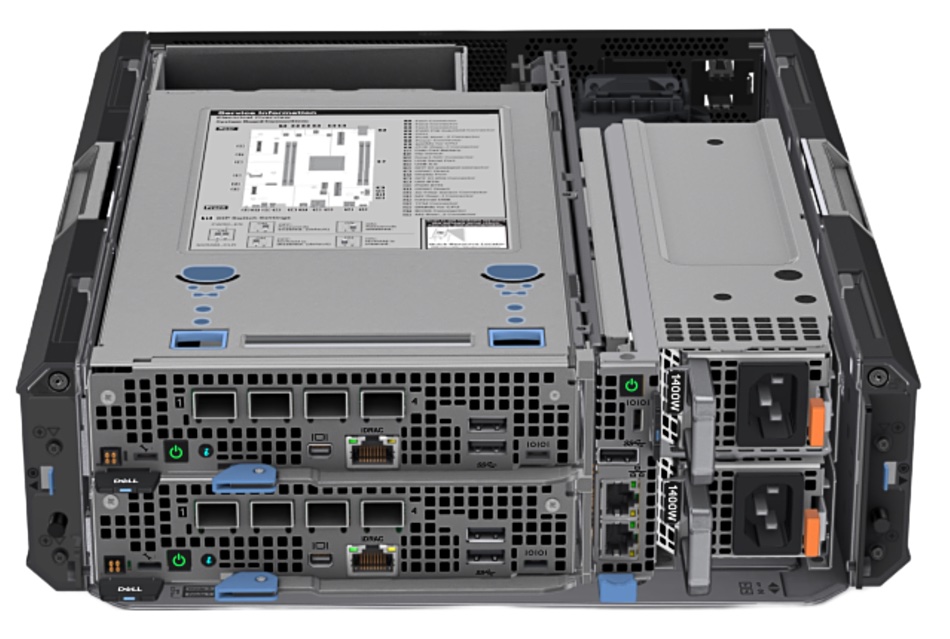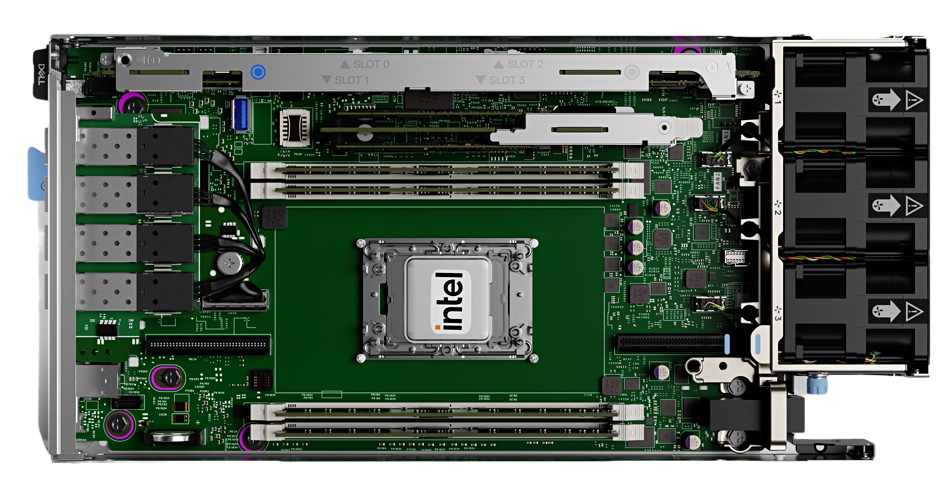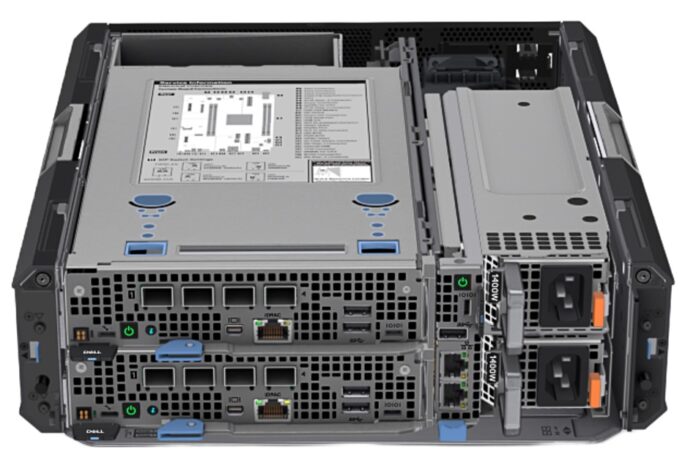As promised back in August, Dell has introduced its rugged and modular VxRail system for edge locations, the VD-4000.
VxRail is Dell’s hyperconverged compute+networking+storage+vSphere hypervisor all-in-one-enclosure system which can scale out as a customer’s needs grow. VxRail nodes are based on Dell PowerEdge servers. The edge-focused VxRail systems were expected to be available in late January and have arrived more or less on time.
A blog by Nancy Hurley, Director for HCI Product Marketing at Dell, says: “It’s often said the smallest things have the biggest impact. Today, this is especially true as we introduce the smallest Dell VxRail hyperconverged infrastructure system yet.”
The VD-4000 has “a smaller, purpose-built form factor extending the benefits of VxRail to locations previously inaccessible due to unfavorable conditions, low bandwidth and footprint restrictions.“
It has several chassis options:
- VD-4510c 1U and VD-4520c 2U node sleds in a standard-width rack mount chassis
- VD-4000r rackable chassis supports 4 x 1U node sleds, 2 x 2U node sleds + vSAN witness or a combination of 1U and 2U node sleds, and is wall-mountable
- VD-4000z stackable and mountable 14” deep by 10.5” wide chassis – about the size of a shoebox – supports 2 x 1U node sleds + vSAN witness or 1 x 2U node sled, and can be stacked on a shelf or mounted on a wall
Both the rackable and stackable VD-4000s support up to four NVMe SSDs mounted on an M.2 sled. (Thanks to Storage Review for some of these details.)
The VD-4000 is based on the Dell PowerEdge XR4000 server fitted with Intel’s Xeon D processor. It supports Nvidia A2 and A30 GPUs for running AI/ML and analytics at edge sites.

Can I get a witness?
Clustered HCI systems, typically two-node clusters at edge sites, have to cope with the situation where a node fails or misbehaves and a split-brain scenario is entered. The cluster has to decide which node (brain) is the correct or surviving one to run the application and use consistent data.
Typically there is a so-called witness node which has metadata records of all nodes and partners which decides the correct node, forming a so-called quorum and regaining data consistency. Virtual machines from the now discarded node can be vMotioned to the new main node and restarted. But this requires a three-node cluster, with the third node being in a datacenter or the cloud for space-restricted edge sites.
The VD-4000 has an embedded vSAN witness card, with its own Intel Atom CPU, that eliminates the need for a separate witness node to achieve data consistency. Hurley says this enables creation of a self-contained two-node vSAN cluster for far-edge deployments in locations previously unattainable due to low latency and low bandwidth constraints.

A two-node VD-4000 with the embedded vSAN witness requires 38 percent less power than a standard three-node cluster (VxRail three-node single socket E660F), says Hurley. She adds: “VxRail HCI System Software also automatically lifecycle manages the onboard witness, ensuring the witness is always in a validated state.”

The VD-4000 can operate in temperatures from 27°F to 131°F (-5°C to 55°C) and has been tested to withstand shock and vibration with Network Equipment-Building System (NEBS) and Military Standard (MIL-STD) certifications.
Hurley says: “Both VD-4000 chassis also have the option to include a lockable intelligent filtered bezel that will alert you when clogged, to keep your system free from dust, humidity and other air contaminants prevalent in a lot of edge locations like mobile command centers, military sites, construction sites or lint-filled retail backrooms.”
The Scale Computing view

We asked Jeff Ready, Scale Computing’s CEO, what he thought of these systems. He said: “I think if anything this validates what we’ve been doing at Scale around edge computing – and even their positioning here underscores that the edge is an important piece of IT infrastructure, as we’ve been talking about at Scale for years.
“The configs they offer are cool. Many edge deployments need something considerably smaller than that (like our HE-150 series, or Intel’s NUC EEC powered by Scale). Larger edge deployments can use something like this, and I’m sure it would do a fine job running the Scale Computing HyperCore software stack, rather than the VMware stack.”
He cautioned: “The edge is really the inverse of the datacenter. A datacenter deployment is likely 1 or a small number of physical locations, hundreds of servers at those locations. The edge, on the other hand, is hundreds or thousands of locations, with often 1-3 servers at each one. You can’t manage them the same way. You’re still deploying thousands of severs, but with many, many locations you obviously can’t have a team of IT pros at each one like you would in a datacenter. You need automated deployment, automated management, automated error recovery to make the edge work.”
And that’s what Scale provides: “Features like zero-touch provisioning in SC//Fleet Manager and self-healing automation of SC//Hypercore are the real game changers, and that’s where the real differentiation is. Hardware should be matched to needs in any deployment, but where the Scale customers really benefit is in the ease of deployment and management of that full edge deployment.”
Hurley points out: “The VxRail VD-4000 continues to enable a common operational model across IT landscapes and extends the simplicity of VMware and VxRail to any location.” In other words, it’ll fit right in to customers’ existing VxRail deployments.








